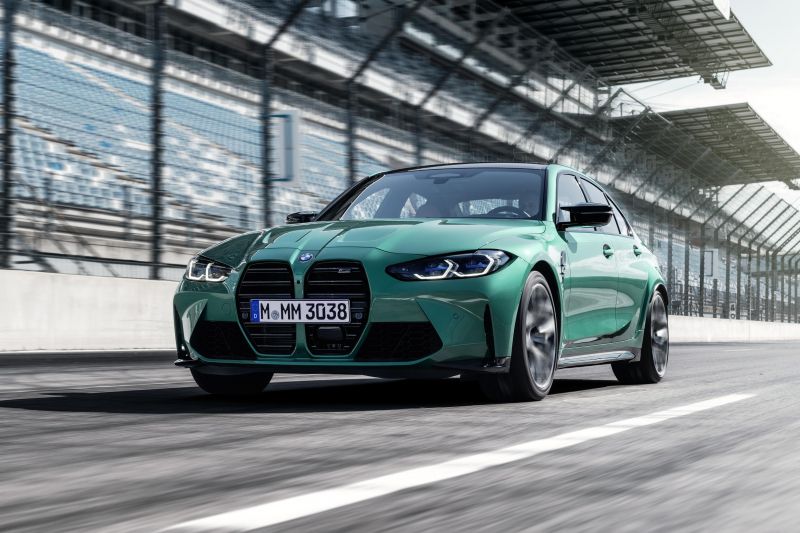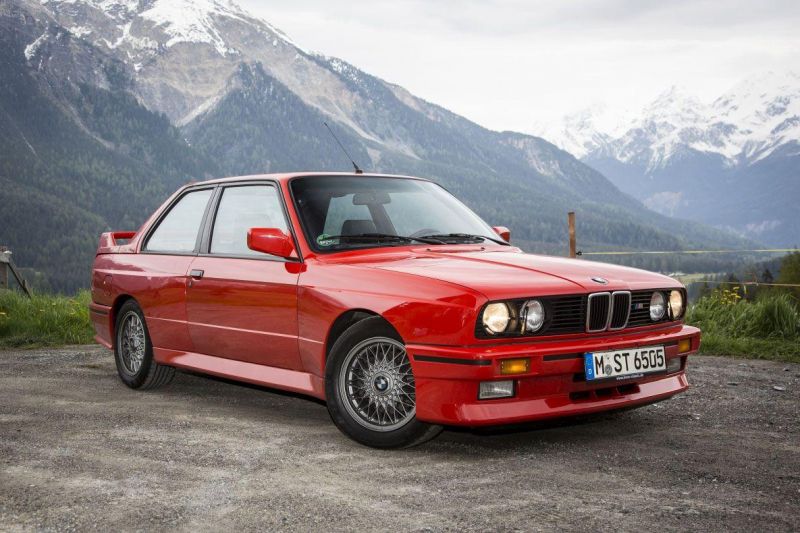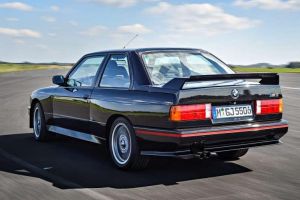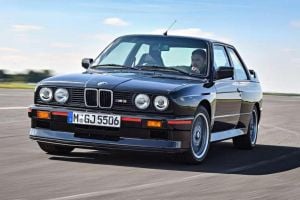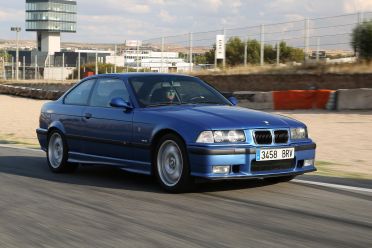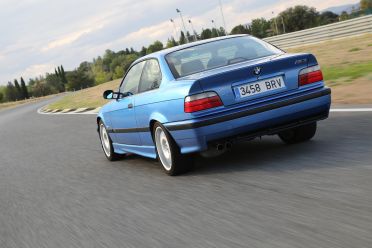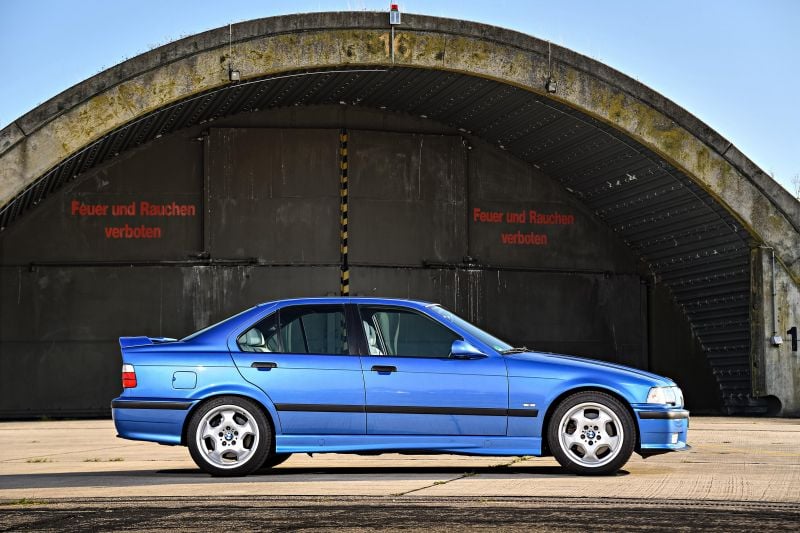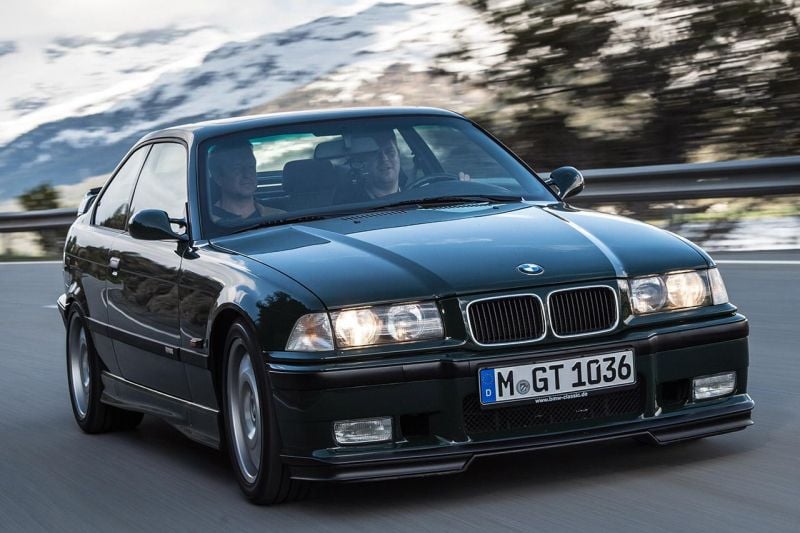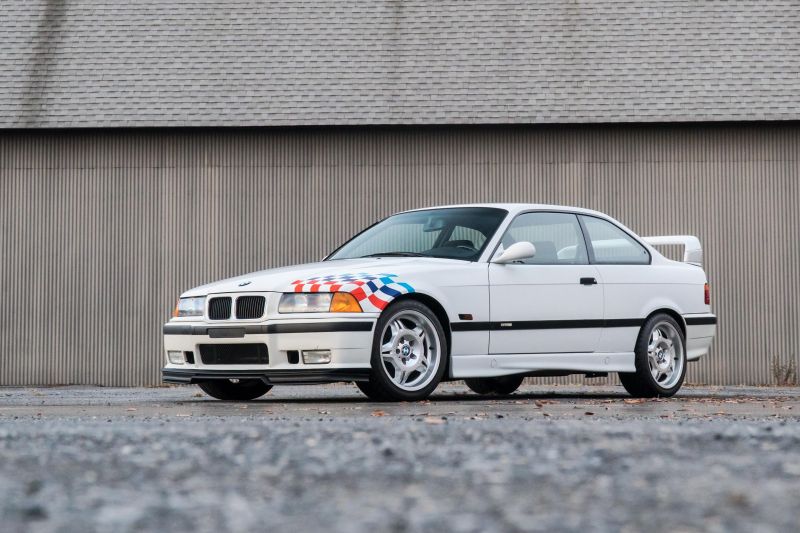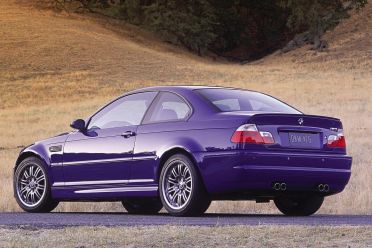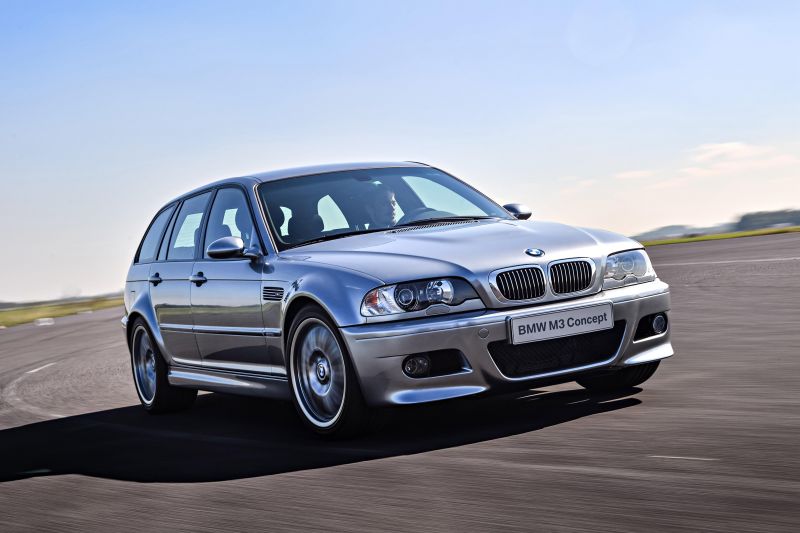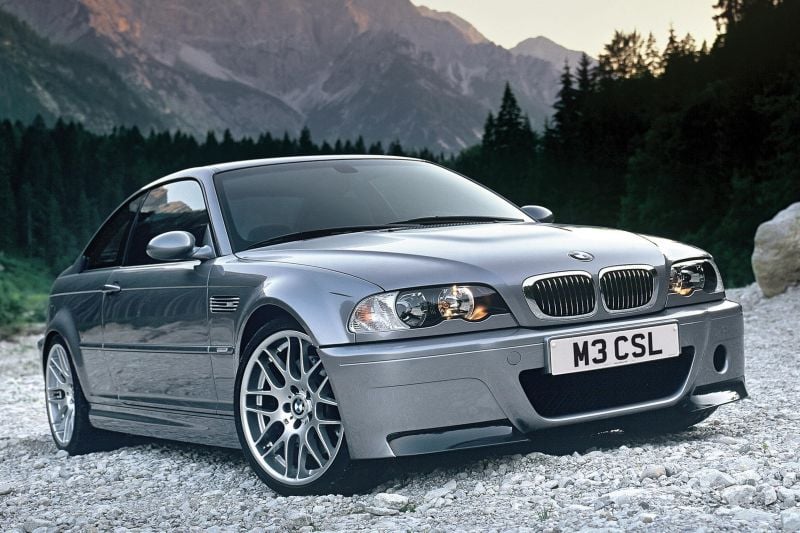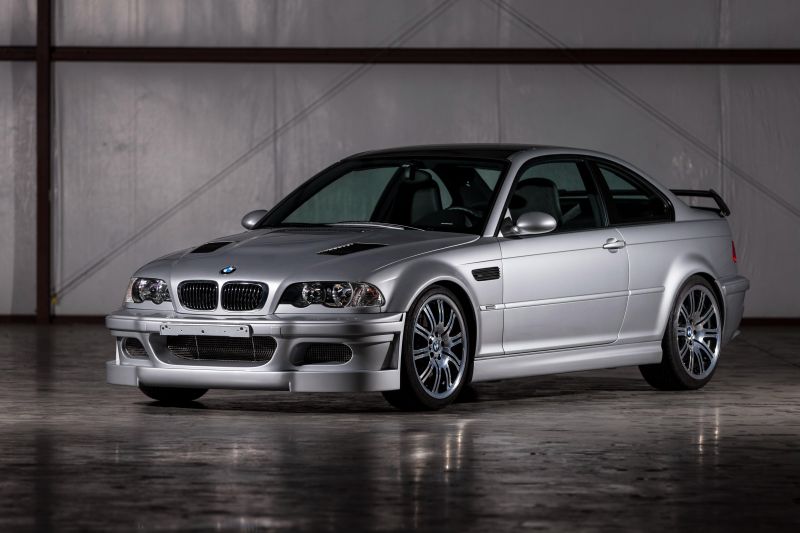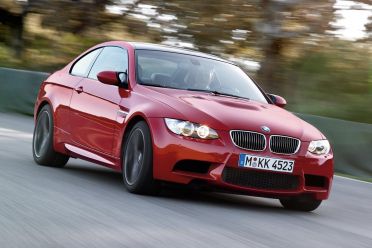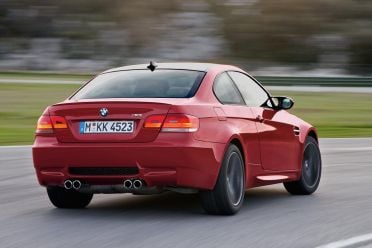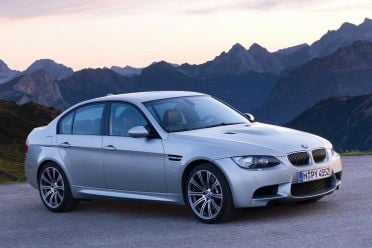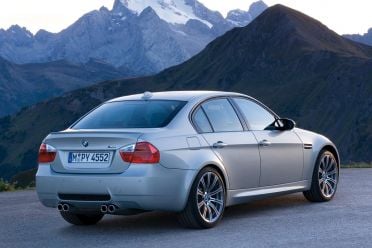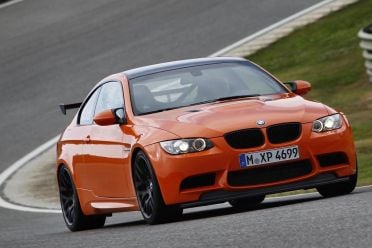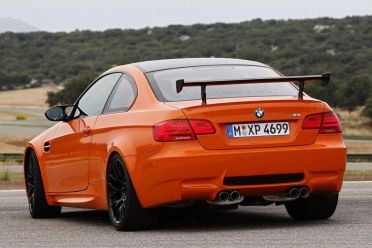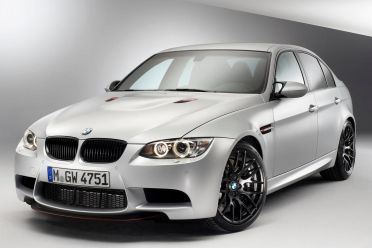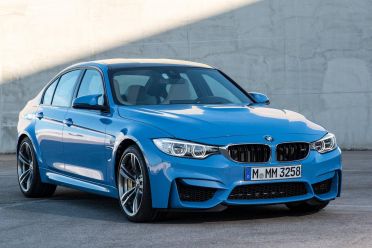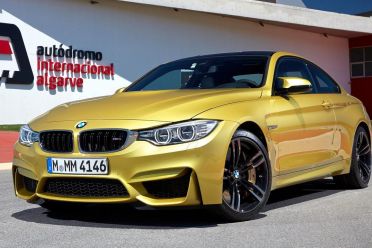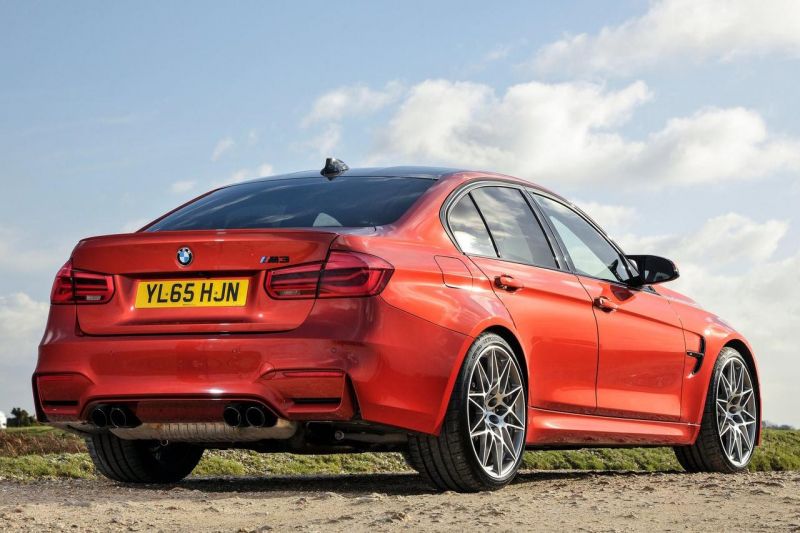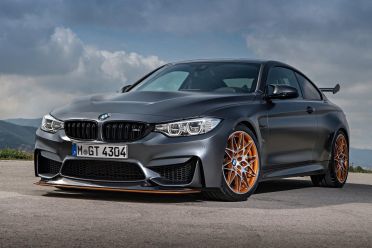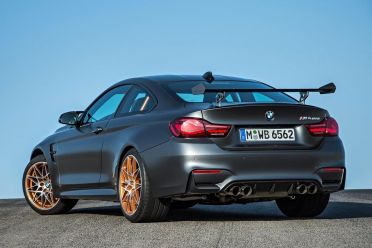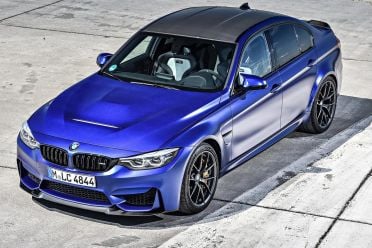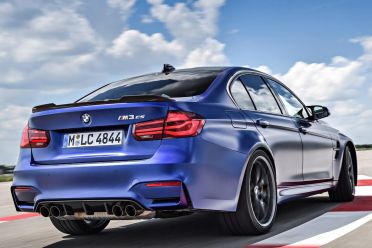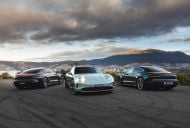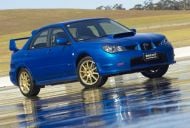There’s a new BMW M3 and M4. The car that arguably created – and continues to define – the compact performance sedan segment is facing its toughest ever crop of rivals in 2021, from the Mercedes-AMG C63 S to the Alfa Romeo Giulia QV.
With that in mind, it’s safe to say Markus Flasch and his band of engineers have thrown everything at the 2021 M3 and M4. It’s a high-tech beast, with the option of rear-wheel drive and manual, or all-wheel drive and torque-converter automatic drivetrains.
There are turbochargers, an array of sophisticated driver assists, and the promise of a wagon for the first time. It’s safe to say the BMW M3 has come a long way since the early days.
MORE: 2021 BMW M3 and M4 officially revealed, here early next year
E30 BMW M3 (1986 until 1991)
The BMW M3 started life as a homologation special, designed to allow BMW to compete in German touring cars (DTM, or Deutsche Tourenwagen Meisterschaf) and Group A racing.
It was comprehensively overhauled on the outside, but the biggest changes to the M3 came under the bonnet. Power came from a 2.3-litre four-cylinder engine, dubbed S14.
With parts derived from the six-cylinder engine in the M1 supercar and a block from the four-cylinder M10 engine, it was hooked up to a five-speed manual transmission with period, motorsport-correct dogleg first gear in Europe.
Peak power was 147kW, good for a 100km/h sprint time faster than seven seconds and a top speed north of 230km/h.
On the outside, the M3 shared very little with the regular 3 Series. There was a deeper front splitter and blistered wheel arches, while the re-profiled rear window and lightweight new boot lid improved aerodynamics. Only the bonnet, roof panel, sunroof, and the inside of the doors
The panels the regular 3 Series and the M3 shared were the bonnet, roof panel, sunroof and the inside of the doors.
BMW wasn’t quite done there, though. The E30 M3 Evolution upped power to 162kW, and gained a more aggressive exterior design to boot. Just over 505 cars were built.
But the Evolution wasn’t the most aggressive E30 M3. That honour belonged to the M3 Sport Evolution, the closest you could get a DTM racer for the road short of hopping the fence at the Hockenheimring, nicking Roberto Ravaglia’s keys, and making a run for it.
The Sport Evolution was powered by a 2.5-litre four-cylinder petrol engine with 175kW of power and 240Nm of torque, good for a top speed of 250km/h. Along with the power boost, it featured an adjustable front splitter and rear wing, along with brake cooling ducts where the fog lights once sat.
Values for the M3 Sport Evolution have skyrocketed in recent years. If you want one in 2020, best put aside upwards of $250,000 – as in, US$250,000, or $345,000 in Australian money.
E36 BMW M3 (1992 until 1999)
The E36 M3 was the first with an inline-six engine, and represented a shift away from the pared-back ethos of the E30 that preceded it.
In most parts of the world, the E36 was powered by a 3.0-litre inline-six dubbed S50, making 213kW and 320Nm and hooked up to a five-speed manual transmission powering the rear wheels.
The engine grew to 3.2 litres and outputs swelled to 236kW and 350Nm after a facelift in 1995. The USA wasn’t quite so lucky, instead receiving a specific version with just 179kW.
Thanks to the significant power boost, the (significantly) heavier E36 was a second faster to 100km/h than its E30 predecessor, hitting the mark in just 5.6 seconds. Top speed was limited to 250km/h.
BMW developed a convertible, and a lesser-known four-door sedan version of the E36.
With the E34 M5 coming to the end of its life and no successor apparent, the engineers in Munich didn’t have a fast family hauler, so added a set of rear doors to the next best thing. It also added some walnut trim to the M3’s cabin, subbed the standard seats for more comfortable armchairs, and fitted unique alloy wheels.
A number of lighter, more focused special editions followed the standard E36 M3. There was the M3 R, reserved for just 15 buyers in Australia. Built to help BMW qualify for the Super Production race series, the engine was leaned on to develop 240kW and 320Nm.
In Europe there was the M3 GT with a touch more power (220kW), a touch less weight, and plenty of carbon fibre trim inside. It was a homologation special designed to let BMW compete in FIA and IMSA GT classes and just 356 were built, all of them green.
Given its success in Europe, North American race teams started pestering BMW head office for a race special of their own. The result was the M3 Lightweight.
With no radio, air-conditioning, or sunroof – and less sound insulation – the Lightweight was 91kg lighter than the standard E36. It also rode lower than stock, had more bracing, and featured unique 17-inch wheels.
The package was finished with arguably the coolest bodykit and sticker pack in M3 history.
BMW also dabbled with the idea of doing an M3 compact, preceding the current hot-hatch power wars by around two decades. The stumpier, smaller E36 M3 never saw showrooms though.
E46 BMW M3 (2000 – 2006)
The one we all picture when we think of an M3, right?
The E46 took the E36 formula and refined it to great effect. Power came from a 3.2-litre inline-six engine dubbed S54, making 256kW and 260Nm.
Power was sent to the rear wheels through a six-speed manual or six-speed SMG automatic, essentially a reworked manual with a robotised clutch. Paddle shifters or a sequential-style shift allowed drivers to take control, albeit far more slowly than we’re used to in 2020.
The rear axle was home to a new M Differential, and 18-inch alloy wheels were standard. Wheels aside though, the E46 was quite subtle on the outside.
Broader wheel arches, a more aggressive rear diffuser, and a lower front splitter were the highlights, while the interior was home to leather-trimmed sports seats, an M steering wheel, and the first instance of BMW M’s rev counter with a redline that adapts based on how warm the engine is.
BMW dropped the sedan, kept the convertible, and dabbled with the idea of producing a wagon. It didn’t ease up on the faster, lighter specials, either.
The best-known E46 special was the M3 CSL, which revived one of the best-known names in the BMW back catalogue. No pressure.
Carbon fibre was used for the bumpers, roof, boot lid, and interior trim pieces to shed weight, and the car rode on lightweight 19-inch alloy wheels shod with Michelin Pilot Sport Cup tyres that were notoriously snappy in cold, wet conditions. BMW even upgraded the brakes.
The suspension was stiffer, the steering was faster, and the stability control was retuned to allow a bit more freedom on the racetrack without removing the safety net entirely.
Under the bonnet, BMW upgraded the inline-six engine to output 268kW for a claimed 100km/h sprint time of 4.9 seconds with launch control active. Only the SMG transmission was offered, complete with paddle shifters behind the steering wheel.
Like the E36 M3 Lightweight, the E46 CSL was stripped out behind the wheel. The powered seats, infotainment system, climate control, and stereo system were ditched, and front seat occupants sat in carbon-backed bucket seats.
The CSL wasn’t the only lighter, faster, angrier M3 to roll forth from BMW. The M3 CS – or Competition Package – borrowed some parts from its limited-run cousin, albeit without the uprated engine. It rode on 19-inch wheels, had faster steering, and packed the intelligent stability control system from the CSL.
Rarest of all, though, was the M3 GTR. Designed for racing and made famous in Need for Speed, it was the first factory M3 to feature a V8 under the bonnet, packing up to 373kW in race trim.
Technically, BMW needed to build 10 to qualify for American Le Mans. In the end it built six, just three of which made it into customer hands.
E92 BMW M3 (2007 until 2013)
Technically this is the E90, E92, and E93 M3, but we’re going with E92 to keep things simple.
Gone was the inline-six engine from the E36 and E46, replaced with a high-revving V8 that wasn’t a development of an existing project.
Instead, it was a standalone project with a redline north of 8000rpm, and 309kW and 400Nm being put to the rear wheels through a six-speed manual or seven-speed dual-clutch transmission.
The 100km/h sprint was dispatched in 4.6 seconds with the DCT, or just under five seconds with a manual, and top speed was electronically capped at 250km/h once again.
This is the only series-production BMW M3 to feature a V8 engine, and the last to be called an M3 across the coupe, sedan, and convertible bodies.
Why did the four-door return? The Audi RS4 and Mercedes-AMG C63 might have had something to do with that…
The special editions continued with the E92, headlined by the M3 GTS. The standard 4.0-litre engine was bored out to 4.4 litres, power was up to 336kW, and torque was up to 440Nm.
In keeping with its predecessors, there was no air conditioning, no climate control, and a smattering of carbon-fibre trim pieces to help shave 70kg from the regular car’s kerb weight. BMW allowed you to add them back in, though.
There was a roll cage and racing bucket seats inside, and the suspension was overhauled with adjustable dampers, uprated brakes, and adjustable camber for the front and rear axles, all catering to drivers who want to fine-tune their car for track work.
Externally, you could tell the GTS apart from its more mundane stablemates by its 19-inch alloy wheels, deeper front splitter, and race-inspired rear wing.
Just 150 were built, making it one of the most exclusive special M3 models.
The GTS was followed by the CRT, which shared its 4.4-litre V8 engine and focus on lightweight materials, but lacked the roll cage and race buckets. There was plenty of carbon fibre, as BMW looked to flex its muscle in the field of composites, and Frozen Silver paint on the outside.
BMW fitted a titanium exhaust and built just 67 examples worldwide.
F80 M3 and M4 (2014 until 2020)
Goodbye M3 coupe and convertible, hello M4. The F80 rung in the changes thick and fast for BMW.
It was the first turbocharged M3, for one, and represented the start of the M4 name that this morning entered its second generation.
Power crept up to 316kW, and torque leapt to 550Nm – on tap from just 1850rpm, if you don’t mind. BMW stuck with the six-speed manual and seven-speed dual-clutch options, sending power once again to the rear axle.
Capable of hitting 100km/h in just 4.1 seconds, the F80 packed the firepower to take on fast-evolving rivals from Audi and Mercedes-AMG.
BMW’s fascination with carbon fibre reached new heights with the F80. The roof was carbon (a first on the M3 sedan), and the lightweight weave was used for the boomerang-shaped strut brace under the bonnet and the prop shaft (or torque tube).
Despite being bigger and more powerful than the car it replaced, the F80 was actually lighter.
The regular M3 and M4 were shortly followed by Competition Package versions, which packed 335kW of power, and rode on a revised suspension designed to address some of the criticisms levelled at the launch setup. Riding on 20-inch wheels, the Competition Package wasn’t a special edition.
Instead, it paved the way for the model structure BMW has adopted with its new M models, with a Competition option sitting above the regular car in the line-up from launch.
The leanest, meanest M4 was the M4 GTS. It debuted a water injection system for the 3.0-litre turbocharged inline-six engine, which helped boost power to 368kW and torque to 600Nm.
Inside, the rear seats were turfed in favour of a copper-coloured roll cage, and the driver and passenger sat in deep, racy bucket seats. But the stereo, infotainment system, and climate control system remained, in a departure from the path laid down by the M3 CSL and previous-generation GTS.
With copper highlights galore, a deeper front splitter, and a lightweight rear wing, the GTS was significantly more aggressive than the regular M4 line-up on the outside. The devil was in the detail, though. Those tail lights are OLED units, a first for BMW in a production car.
The M4 GTS was followed by the M4 CS, and a four-door M3 CS. With 338kW of power and 600Nm of torque, it was 50kg lighter than its more mundane stablemates thanks to the use of thinner glass, carbon fibre body parts, and a pared-back interior. Michelin Pilot Sport Cup 2 tyres were a no-cost option.
BMW also did a special edition to commemorate the 30th anniversary of the M3, and the brand’s success in DTM racing.
What’s your favourite BMW M3 generation?

